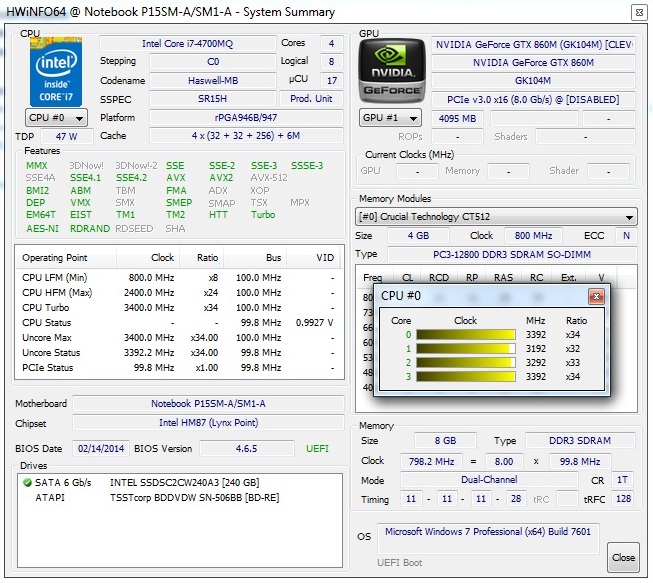

Even so, the newer parts are likely only 10% (give or take) faster than the previous generation parts. Keep in mind that both the 850M and 860M are marketed with "up to xxx MHz" language where NVIDIA has now switched to advertising the base clock (no "up to"). 960M meanwhile represents a minor bump in clock speeds over GTX 860M, going from 1029MHz + Boost to 1096MHz + Boost the RAM stays the same with GDDR5-5000 providing 80GB/s of bandwidth. Interestingly, the clocks and core configurations mean that potentially the GTX 950M is actually a bit slower than GTX 850M (640 cores at 936MHz + Boost compared to 914MHz + Boost), but NVIDIA doesn't disclose the full range of base clocks and Boost clocks so the 950M will hit higher clocks on average compared to 850M.

While the additional bandwidth of GDDR5 may not matter too much at lower resolutions, we’ve seen in the past that it can have a significant impact on performance at 1080p and medium or higher settings.

The GTX 950M has 640 CUDA cores running at 914MHz (+ Boost), and it can be paired with either DDR3-2000 (yuck!) or GDDR5-5000, both using a 128-bit interface. The new GeForce GTX 960M and 950M end up being clock speed bumps from the existing GTX 860M/850M, though this time the 960M is purely Maxwell based and there’s no Kepler alternative. Considering the GTX 965M has 1024 CUDA cores many felt it would use GM206 as well, but that didn’t happen in a similar fashion, those expecting (hoping) GTX 960M and 950M would use a derivative of GM206 are also going to be disappointed and it continues to use the GM107 chip. NVIDIA launched the high-end GM204 back in September/October last year and brought out the mobile GTX 970M and 980M using the chips, and they more recently launched the desktop GTX 960 using a new GM206 part with up to 1024 CUDA cores. Today NVIDIA officially launched their latest mobile GPUs, the GTX 960M and 950M on a quieter note, the 940M, 930M, and 920M also showed up.


 0 kommentar(er)
0 kommentar(er)
